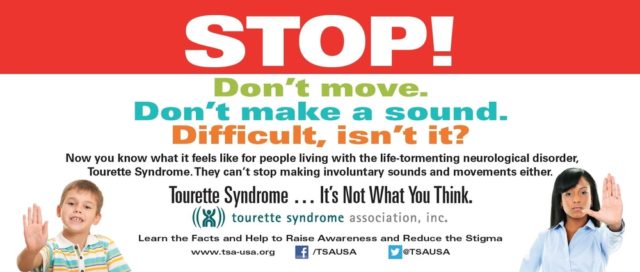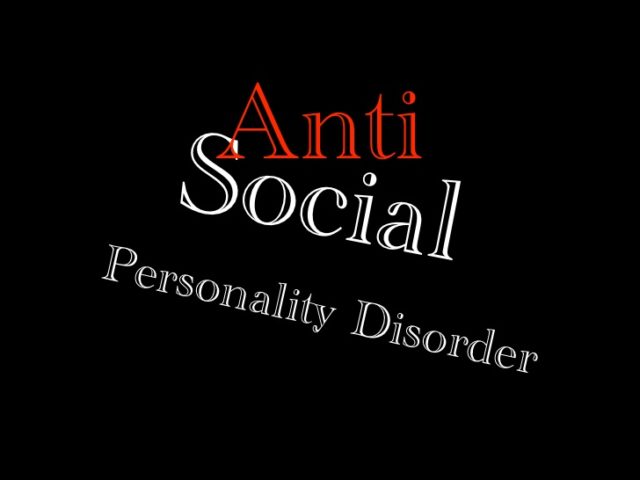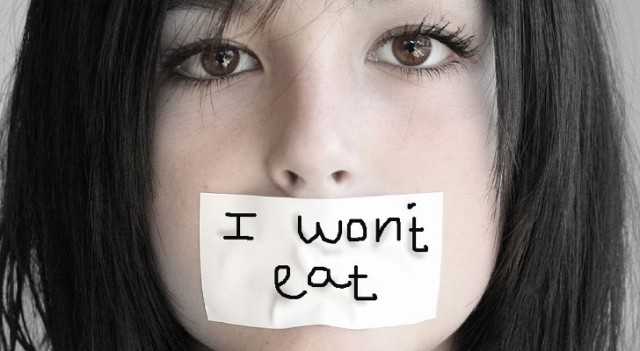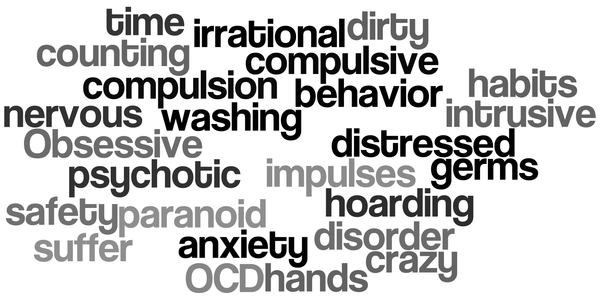10. Bipolar
What It’s Not: Many people seem to associate bipolar disorder with a mood swing. They throw it out to the pregnant woman who is screaming at her unsuspecting husband one minute and telling him how much she loves him the next. Or perhaps kids attribute it to that skill all moms have where they’re yelling at their kids but then answer the phone with a syrupy sweet voice.
What It Is: Someone who’s experiencing bipolar disorder will spend a period of time in mania, which is characterized by excessive irritability, high energy, increased activity and elevated excitement. Someone experiencing a manic episode may seem really cheerful, perhaps to infectious levels.
To the outside observer mania doesn’t seem like such a bad thing, but in reality it causes great distress for those who experience it. At its worst, it can even involve hallucinations and delusions. And when they aren’t feeling this elation, they experience periods of depression. Depressive episodes are full of hopelessness, loss of interest in usual activities, and extreme sadness. You may think it’s easy to spot a depressed person, but depression goes much deeper than mere sadness. It is like your worst hundred days are all happening at once, constantly, for days on end. And the real catch is that sometimes individuals experiencing depression don’t appear sad at all because long-time sufferers often learn how to hide it from others. But the fact remains that they’re swinging between periods of mania and periods of depression, and these moods can last days.
9. ADHD
What It’s Not: attention deficit hyperactivity disorder (ADHD) is a common diagnosis among children. Many teachers, parents and other caregivers send their children to the family doctor for a prescription for medicine because it seems that the child won’t focus on schoolwork, chores or instructions from adults. Some adults think that a child who isn’t interested in a certain activity or who has a developmentally-appropriate short attention span has ADHD. Some also believe that children who are playful or have a lot of energy have the disorder. Those descriptions can actually just be normal child development.
What It Is: Those with ADHD are unable to focus on one activity even if they enjoy it. They’re unable to complete activities because everything distracts them. Even while playing their favorite game with their best friend, concentration is impossible. They forget a lot and organizing their activities is extremely difficult.
Additionally, symptoms related to hyperactivity or impulsive behavior need to be present. These children cannot sit still and they talk excessively. They can be reckless, impatient and appear to lack inhibitions. They’re often labeled as “problem children” who misbehave. It isn’t just a case of being bored at school or wanting to play instead of work. However, with a combination of dietary changes, schedule changes, therapy, and/or medication, children with ADHD can thrive.
8. Multiple Personality Disorder
What It’s Not: We all have different personas that we put on for different situations. The quiet, hard-working administrative assistant in the cubicle next to you may be the biggest party animal you’ve ever met on the weekends. That doesn’t mean that he has multiple personality disorder, though some people may be inclined to joke that he does. Teenagers are notorious for acting one way when their friends are around and a completely different way with family, but that’s normal too. The acts that people put on to get a laugh are also not a sign that they have multiple personality disorder. These are all common ways that individuals express themselves, and none of them mean they are experiencing a mental illness.
What It Is: The actual name for this disorder has been changed to dissociative identity disorder (DID). For those who have it, two or more distinct personality types emerge, and they have difficulty sharing memories between these parts. The areas of differences between these identities can include mannerisms, speech patterns, thoughts and even gender identity. So while Bob may be a confident individual who walks with his head high and speaks proper English, he may also be living with “Tom” inside of him. “Tom” may be a cowardly man who walks hunched over and speaks in only two or three word phrases. These individual parts of Bob never meet, and they aren’t even aware of each others’ existence.
However, a third part of Bob may rear its violent and angry head when he is threatened. This third part serves the purpose of keeping Bob from finding out about “Tom” and keeping Bob safe from any other threats to his psyche. Individuals suffering from DID can experience depression, suicidal tendencies, anxiety, confusion, memory problems, flashbacks and disorientation.
7. Addiction
What It’s Not: While addicts are commonly thought of as people who just lack self-control, there’s a lot more involved both biologically and mentally. Going for one more brownie even though you know you shouldn’t doesn’t mean you’re addicted to brownies. Eating way too much sugar, watching too much TV, or listening to a certain artist over and over have more to do with willpower and self-discipline than true addiction.
What It Is: Addiction is a serious mental health issue where the person has a strong craving or desire to use a substance even in hazardous situations. They continue to use thesubstance even though it interferes with life obligations and causes social or interpersonal problems because they cannot stop. When Tina grabs a beer on her way out the door to pick up her kids from school even though she knows she’s already buzzed and shouldn’t be driving, she is showing a sign of addiction. When John misses work for the fifth time this month because he is strung out on meth, he may not even think he has a problem. And while addiction is a mental illness that many people believe these individuals bring on
themselves, the fact remains that it is a illness. In order to get better, treatment and understanding are necessary.
6. Tourette’s Syndrome
What It’s Not: Some people will throw out Tourette’s syndrome as an excuse for the kid who sits in the back of class calling out “purple dinosaur” when asked the capital of New York. Your friend who refuses to filter her thoughts before they pop out of her mouth is probably not unable to filter them; she just chooses not to. When you insult someone or yell out obscenities and then realize it was stupid, you shouldn’t blame Tourette’s syndrome. It’s not an excuse for poor behavior.
What It Is: Tourette’s syndrome (TS) is a disorder whose sufferers have multiple motor tics and at least one verbal tic. Motor tics include eye rolling, lip licking, pulling at clothes and twirling hair. Verbal tics include throat clearing, grunting, humming, and stuttering. The common go to for people who are joking about TS is coprolalia, which is the involuntary and repetitive use of obscenities or other unacceptable phrases. However, less than 40 percent of those with TS have coprolalia. For those who do, we must remember that it’s involuntary. These individuals can feel a discomforting sensation that goes away after their tics, and in this way it’s similar to OCD, which commonly co-occurs with TS.
5. Narcissist
What It’s Not: We’ve all met someone who thinks they’re a gift to humanity: the guy who gets by on his gorgeous face and expects everyone to make exceptions for him, the girl who’s been offered free drinks her whole life because she’s that beautiful, the kid who always has the right answer and expects everyone to recognize his supreme intelligence. But liking yourself, talking about yourself, feeling confident in your skills and having high self-esteem doesn’t make you a narcissist.
What It Is: Individuals with narcissistic personality disorder often walk around as if they’re the best thing in the world, while internally wondering if they’re good enough. They seek the approval of others, and their personal standards are either unreasonably high or unreasonably low — both to make themselves feel important. They don’t realize the impact they can have on those around them and they demonstrate little empathy. They tend to have feelings of grandiosity related to their self-importance that don’t correspond to their actual abilities, such as believing that their presence in someone’s life should always be the most important thing to that person. They also tend to engage in extreme attention seeking behaviors because of their overwhelming need for admiration. Those with narcissistic personality disorder tend to have a strong sense of entitlement and exploit those around them.
4. Antisocial
What It’s Not: We’ve all had the friend who was “feeling antisocial” and just wanted to be alone, but that’s actually being asocial. Everyone needs alone time, and while introverts need it more often than extroverts neither is a disorder. It can be healthy to step away and take time for ourselves, and wanting to skip the next big party because you have a big project due at work doesn’t make you antisocial. If anything, that’s a pro-social choice because you’re not putting your colleagues in a bad situation by showing up with an incomplete project.
What It Is: Someone who has antisocial personality disorder enjoys causing harm to others. They’re often manipulative, callous, hostile, reckless and impulsive. They tend to participate in excessive risk-taking behaviors. They lack empathy and feel contemptuous of others’ rights. These are the individuals commonly referred to as psychopaths or sociopaths. They’re often very charming, which aids them in harming the people around them. These individuals don’t feel remorse, but because of their ability to charm they can lead you to believe that they do.
3. Anorexic and Bulimic
What It’s Not: Models are often called anorexic because they’re extremely thin, but being skinny isn’t a disorder. Dieting occasionally and enjoying exercise at a reasonable level doesn’t make you anorexic, but overexercising can be a sign of a problem. Throwing up after you eat food that upsets your stomach or failing to stop eating cookies until the whole batch is gone doesn’t make you bulimic. While all of these things can be ways to hide an eating disorder, they are not in and of themselves diagnosable.
What It Is: Anorexia nervosa and bulimia nervosa are serious mental conditions in which a person does not see themselves the same way that others do. They believe they’re overweight whether they are or not. Those with anorexia have a pathological fear of weight gain so they diet excessively, and that results in severe weight loss. Those with bulimia engage in periods of binge eating followed by behaviors to reduce weight gain, such as self-induced vomiting. It’s the combination of the two that warrants a diagnosis of bulimia nervosa. While you do have to be underweight to receive a diagnosis of anorexia nervosa, someone who is not underweight can have bulimia nervosa.
2. Retarded
What It’s Not: Many people resort to calling someone a retard when they’re engaged in a debate and run out of intelligent responses, especially if they’re on the Internet. Saying something others perceive as stupid or something that others disagree with is not retarded, nor is making a mistake.
What It Is: Mental retardation has been renamed intellectual disability, and it’s an impairment in general mental abilities affecting adaptive functioning in conceptual, social and practical domains. Individuals with this disorder learn slower and are unable to learn some skills. They have deficits in language, math, reasoning, empathy, communication skills, personal care, money management and organizing tasks. It can be difficult for individuals with this disorder to make and keep friends. While an IQ of 70 or lower is considered part of the disorder, IQ is not where the emphasis lies.
1. Obsessive-Compulsive Disorder
What It’s Not: There are numerous Internet memes that equate organization and neatness with obsessive-compulsive disorder (OCD), but people who actually have OCD don’t necessarily like things neat and organized. This is not a disorder of perfectionism. In fact, organization itself is not a disorder unless it’s interfering with the daily life of an individual. In that case, it’s more likely related to obsessive-compulsive personality disorder. While named similarly, the two disorders aren’t the same. Another common misuse of OCD occurs when someone likes to wash their hands or use hand sanitizer a lot. While this could be a symptom of OCD, it could also just be an elevated desire to maintain personal hygiene.
What It Is: Individuals with OCD perform compulsive behaviors in order to temporarily relieve anxiety caused by their obsessive thoughts. These thoughts can be related to a range of things: personal death, disease, contamination, security, loss of loved ones and much more. The compulsive behaviors may or may not seem related to the thought to outsiders. For example, someone who is afraid of contamination and washes their hands incessantly seems plausible, but the man who cannot walk past a lamppost without tapping his eyebrow three times for fear that forgetting will cause his mother to die is less relatable. OCD is an anxiety disorder, and without the anxiety related to the obsessive thoughts the compulsive behaviors can just be personality quirks.










No comments:
Post a Comment